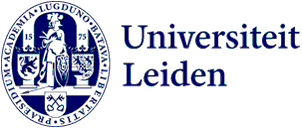
Nadine Akkerman: ‘It’s an incredible feeling, rewriting such an iconic event from a country’s history.’
Ever since Nadine Akkerman, Professor of Early Modern Literature & Culture, came across a woman spy in her research, secret agents have kept cropping up in her work. Now there’s Spycraft, a popular history book exploring the espionage techniques used by early modern spies, which she has co-written with historian of science Pete Langman.
How did you become interested in spies?
‘While I was researching the Queen of Bohemia’s correspondence network, I happened to stumble upon a woman spy. I thought: if I’ve found one of them, and a major one at that, there could be more. So I started digging in the archives. This digging led to Invisible Agents, an academic book with lots of footnotes -- as academic books tend to -- but the book really caught on with the general public. Apparently even footnotes could not put the general reader off from learning about woman spies, and I found myself being invited to literary festivals. Much to my surprise, however, what my audiences really wanted to know was how these spies went about their work. How do you actually make invisible ink? How do you decipher a code? That gave me the idea of writing a book about the gritty reality of a spy’s toolkit.
Spycraft is published by Yale University Press but it’s a book for a wide readership, using your earlier research as a springboard. What new things did you discover?
‘That I was naive, and my co-author too. We thought we’d be clever and focus on well-known episodes from history, so that we wouldn’t need to explain much background. But as soon as you uncover new aspects of materiality, even the most iconic stories start to shift. Not very drastically, but new players will emerge, for example.’
What new discoveries did you make?
‘One of the most famous plots to depose – and even murder – Elizabeth I is the Babington Plot. The aim was to replace Elizabeth with Mary, Queen of Scots. This plot is always seen as an interplay between Elizabeth, Mary and the English minister and ‘spymaster’ Francis Walsingham, which ended with Mary’s execution; but once you start to look at how the ciphers are used, it turns out to be a conflict between secretaries. Walsingham pulls some strings and Elizabeth does indeed sign Mary’s execution warrant, but apart from that it’s much more a matter between Elizabeth’s cryptanalyst (codebreaker) Thomas Phelippes and Mary’s three secretaries – Claude Nau, Gilbert Curle and Jerome Pasquier – who often aren’t even mentioned in biographies of Mary. It’s truly incredible that you can rewrite a plot like that.’
Did you always want to study English?
‘In high school I thought I’d like to study psychology. I actually did all kinds of things to prepare for this, like including maths in my subjects. I was good at a lot of subjects but struggled with maths and only got a six or seven. Looking back, it actually wasn’t necessary. During an open day, I accidentally walked into the wrong lecture hall, where a regular English lecture was being given to students. I sat in on that, and found it so much more enjoyable that I just decided to study English instead.’
What kind of student were you?
‘Inquisitive. If something wasn’t covered in a course, I looked it up myself. After a while I got frustrated that very little was taught about women writers. So alongside my studies at VU Amsterdam, I took a semester of women’s history in Utrecht, to get a different perspective on the curriculum. I would say I seized all the opportunities that were available.’
How do you relax?
‘I must admit that I don’t have much free time, especially now that I’m a full professor, but I enjoy doing yoga or eating out with friends. I also walk for about an hour nearly every day. I will often start in the Hortus. With an annual pass, you can go as often as you like for a very reasonable price. I think it’s wonderful, partly because gardening is something I love doing myself.’
